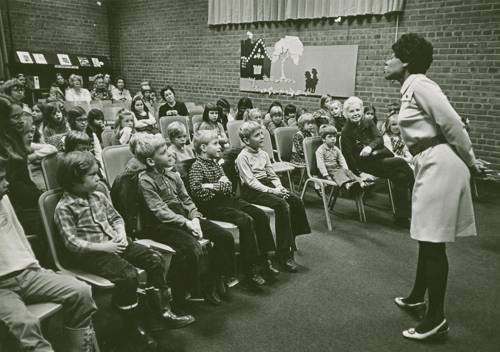
FAQ About The Cultural Significance of Spoken Narratives

What is the cultural significance of spoken narratives?
Spoken narratives, or oral storytelling, hold immense cultural significance as they serve as a primary means of preserving and transmitting cultural heritage. These narratives often encompass folklore, traditions, history, values, and collective experiences of a community. Oral storytelling allows for the preservation of language and identity, as it conveys cultural nuances and social norms through generations.

How do spoken narratives preserve cultural heritage?
Spoken narratives preserve cultural heritage by acting as vessels for knowledge and traditions passed down through generations. They capture the history, beliefs, customs, and stories particular to a community, keeping them alive even in the absence of written records. Elders and storytellers play crucial roles in maintaining this heritage, ensuring that the stories remain relevant and are not lost over time.

What role do oral storytelling play in modern media?
Oral storytelling has influenced modern media significantly. It provides a foundation for narrative structures, themes, and storytelling techniques used in various formats such as films, television, radio, and podcasts. Elements of traditional stories often inspire modern narratives, resulting in a rich interplay between old and new storytelling methods. Oral traditions also offer authenticity and depth to media content, reflecting diverse cultures and experiences.

Can spoken narratives influence individual and collective identities?
Yes, spoken narratives can profoundly influence both individual and collective identities. They help individuals connect with their cultural roots, understand their place within a society, and reinforce communal bonds through shared stories. Collective narratives contribute to shaping group identity, fostering unity and a sense of belonging. They reflect community values and aspirations, impacting how societies perceive themselves and others.

What are some examples of oral storytelling traditions around the world?
Oral storytelling traditions abound globally. Some examples include the griots of West Africa who are custodians of oral history and music; the Native American oral traditions that encompass myths, legends, and moral teachings; and the Irish seanachaí, who have historically preserved folklore and history through storytelling. Each tradition reflects its culture’s unique values and perspectives.

How has technology impacted oral storytelling?
Technology has had a transformative impact on oral storytelling. It enables wider dissemination of stories through digital platforms, audiobooks, and podcasts, thereby reaching global audiences. While technology offers preservation and accessibility, it has also shifted some aspects of storytelling from oral traditions to digital formats, changing how stories are experienced and valued.

What are the challenges faced by oral storytelling in contemporary times?
Contemporary oral storytelling faces several challenges including the potential loss of traditional languages, diminishing numbers of skilled storytellers, and competition from digital media which may overshadow oral traditions. Moreover, rapid cultural changes and globalization pose threats to preserving authentic voices, necessitating active efforts to maintain these storytelling practices.

Why is oral storytelling considered an art form?
Oral storytelling is considered an art form because it requires creative skill in narration, expression, and performance. Storytellers employ various techniques such as voice modulation, body language, and improvisation to engage audiences and bring stories to life. This artistic expression makes each storytelling event unique and impactful.

How do oral narratives contribute to education?
Oral narratives contribute significantly to education by enhancing cultural literacy, language skills, and critical thinking. They offer historical insights and moral lessons, fostering a deeper understanding of different cultures and perspectives. In educational settings, storytelling can be a powerful tool for interactive learning and character development.

What is the difference between oral and written narratives?
The primary difference between oral and written narratives lies in their mode of transmission. Oral narratives are spoken, often relying on memory and performance, while written narratives are recorded in text, offering permanence and stability. Oral storytelling allows immediate interaction and adaptation, whereas written narratives provide structured, consistent content.

In what ways are spoken narratives employed in rituals and ceremonies?
Spoken narratives are integral to rituals and ceremonies, serving to impart meaning and continuity to the event. They may recount historical events, ancestral achievements, or spiritual teachings, providing contextual significance to the proceedings. Through storytelling, these occasions become mediums for cultural reinforcement and communal connection.

How do spoken narratives foster community and social change?
Spoken narratives foster community and social change by creating spaces for dialogue and reflection. They address social issues, challenge norms, and inspire collective action by presenting stories that resonate with shared experiences and values. Storytelling can promote empathy, understanding, and solidarity, making it a potent tool for social transformation.

What elements make a spoken narrative effective?
An effective spoken narrative typically includes elements such as a clear structure, compelling characters, vivid imagery, and emotional resonance. The storyteller's ability to convey authenticity, engage the audience, and adapt the narrative to the listeners' needs also contributes to its impact. Effective storytelling thrives on the storyteller's creativity and empathy.

Can spoken narratives generate empathy among audiences?
Yes, spoken narratives are highly effective in generating empathy. By sharing stories that depict human experiences, emotions, and challenges, listeners are often able to identify and feel compassion for the characters and situations described. The immediacy and personal connection through oral storytelling can bridge gaps between diverse perspectives, fostering understanding and communal empathy.

How do spoken narratives evolve over time?
Spoken narratives naturally evolve over time through collective reinterpretation and adaptation. As storytellers share stories, they may make adjustments to resonate with new audiences or reflect changing cultural contexts. This evolution keeps narratives relevant and ensures they reflect contemporary values and concerns, while still retaining their core essence.

What is the role of the storyteller in oral traditions?
The storyteller in oral traditions acts not only as a narrator but also as a custodian of culture, a performer, and a community leader. Storytellers possess the ability to preserve history, instill values, and entertain audiences through their art. They adapt stories to fit cultural contexts and audience needs, ensuring the narratives' viability and significance.

How are myths and legends transmitted through oral storytelling?
Myths and legends are transmitted through oral storytelling by being recounted, memorized, and passed down from generation to generation. Storytellers use their narrative skills to preserve these tales, ensuring they remain dynamic and engaging for each new audience. This oral tradition keeps myths and legends alive, influencing cultural beliefs and social norms.

Why do some cultures prioritize spoken narratives over written ones?
Some cultures prioritize spoken narratives due to a strong emphasis on oral traditions as central to cultural preservation and communal identity. In societies where language, literacy, or written resources have historically been limited, oral storytelling offers a practical and accessible method of sharing knowledge and keeping traditions alive. The communal aspect of oral narratives also reinforces social bonds and cultural continuity.

How does storytelling reflect cultural values and beliefs?
Storytelling reflects cultural values and beliefs by conveying themes, morals, and lessons inherent to a culture. It showcases shared experiences and societal principles through narratives that resonate with a community's identity. Stories often highlight virtues, taboos, and aspirations, offering insights into how a culture perceives the world and its place within it.

What impact do spoken narratives have on young generations?
Spoken narratives have a profound impact on young generations by fostering cultural awareness, linguistic skills, and creativity. They engage children in the richness of their heritage, educating them about history, values, and traditions. Through storytelling, young individuals develop empathy, imagination, and a sense of belonging, influencing their personal and social growth.
